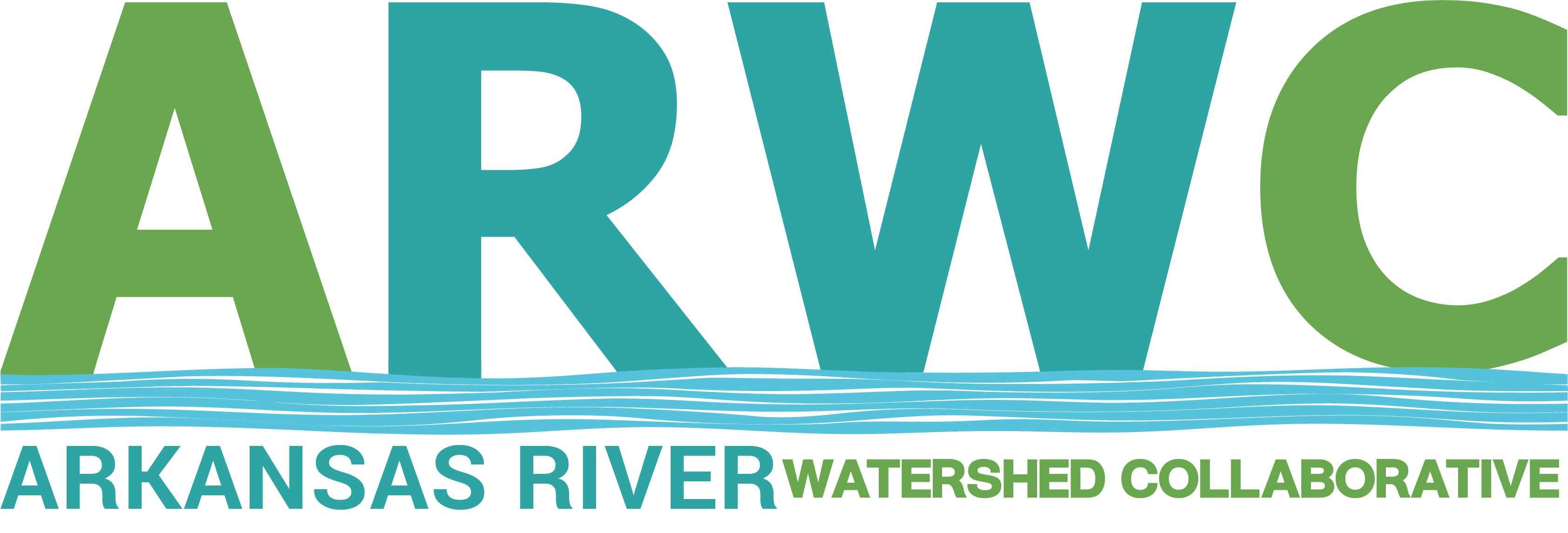On June 27, 2018, the Spring Creek Fire erupted near La Veta, Colorado, ultimately becoming the third-largest wildfire in the state’s history. This human-caused blaze not only scorched over 108,000 acres but also destroyed 216 homes and severely impacted the Cucharas and Indian Creek watersheds, which are crucial for drinking and agricultural water. Recognizing the ongoing threat of post-fire flooding, a coalition of local groups, agencies, and partners formed the Recovery Multi-Agency Coordination (RMAC) Team to address the crisis. Their coordinated efforts laid the groundwork for the extensive recovery projects led by the Arkansas River Watershed Collaborative (ARWC) to restore the landscape and protect communities from future threats.
Phase 1: Immediate Response and Critical Actions
ARWC’s initial response to the Spring Fire focused on urgent recovery actions, including debris removal, flood prevention, and hillslope stabilization. Through strategic partnerships and community involvement, ARWC cleared over 9,000 linear feet of streams and treated nearly 34 acres of floodplain and hillslopes, significantly reducing the risk of post-fire flooding in the area. These efforts laid the groundwork for more extensive restoration projects to follow.
Phase 2: Expanding Impact and Strengthening Resilience
Building on the successes of Phase 1, ARWC expanded its efforts to include more comprehensive treatments across the burn scar. In this phase, the organization implemented over 1,500 Log Erosion Barriers (LEBs) and nearly 1,000 contour-felled logs, which played a critical role in stabilizing soils and preventing further erosion. These measures have proven essential in protecting the landscape from the impacts of heavy rainfall and future storms.
Key Accomplishments: Spring Creek Fire Nonpoint Source BMPs Project
The Spring Creek Fire Nonpoint Source BMPs Project focused on implementing best management practices (BMPs) to reduce sediment loading and protect water quality in the Cucharas River and Huerfano River watersheds. ARWC, in partnership with the Huerfano County Water Conservancy District, oversaw the project, which included tasks such as:
- Stabilizing Streambanks and Roads: ARWC implemented erosion control measures along key roads and streams, reducing sediment runoff and protecting critical infrastructure. This work was vital in preventing further degradation of water quality in the affected watersheds.
- Debris Removal and Stream Restoration: The project involved clearing debris and restoring natural stream channels, allowing water to flow more freely and reducing the risk of flooding and erosion. This work helped protect both public and private drinking water supplies from contamination.
- Community and Environmental Benefits: These efforts have had a significant impact on both the environment and local communities. By reducing sedimentation and stabilizing soils, ARWC has helped protect vital water resources, preserve wildlife habitats, and ensure the long-term health of the ecosystem.
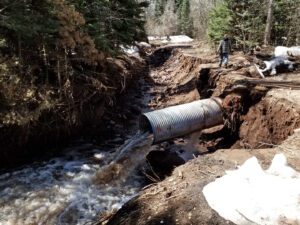
Flooding damage downstream following the Spring Creek Fire.
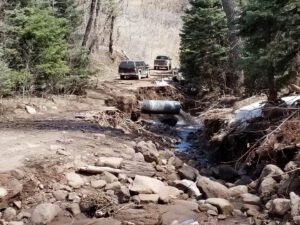
Flooding damage downstream following the Spring Creek Fire.
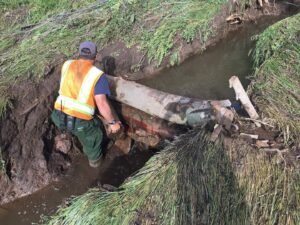
Check dam installation designed to re-aggrade the creek channel and to reduce sediment transport downstream.
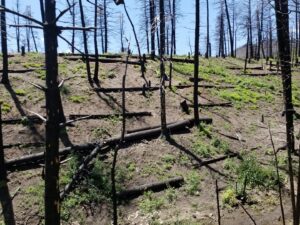
Hillslope stabilization designed to re-establish native species and to reduce sediment transport downstream.
